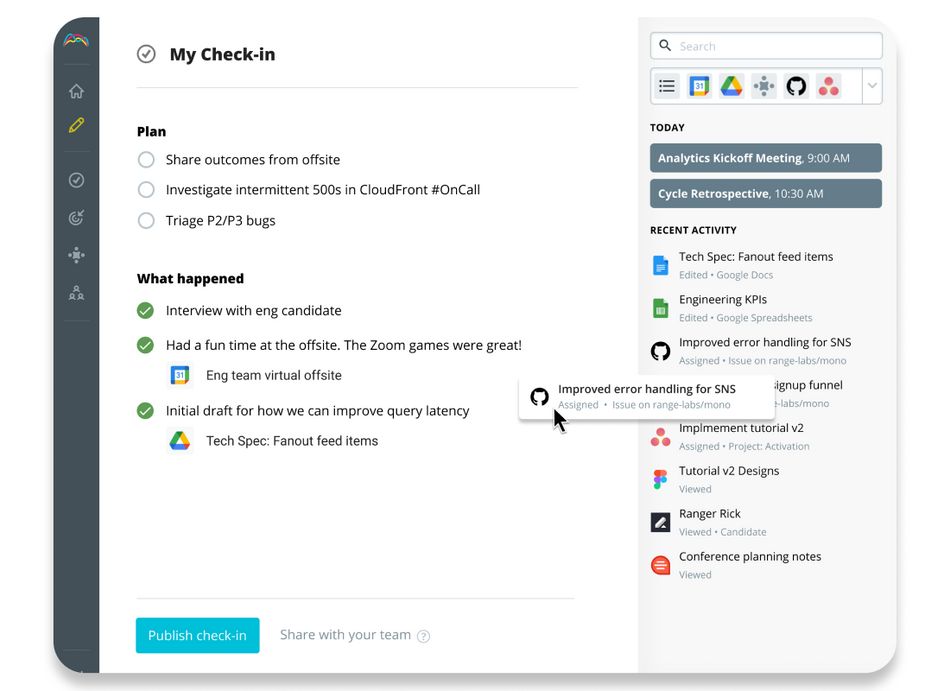
Six years ago, Kevin Roche and Lindsay Jurist-Rosner started Wellthy to help families with care coordination, providing personalized support for people as they navigate the system when caring for aging or chronically ill loved ones. Today, Wellthy is offered as an employee benefit, supporting employees at progressive companies like Cisco, Facebook and Salesforce.
Kevin had always been a technologist, studying computer science and math, then working as an analyst for Goldman Sachs, but found he wasn’t particularly passionate about finance. “I asked myself if that’s where I wanted to spend my whole career, and decided that I wanted to be in a place where I could have a more direct, tangible, positive impact on everyday people,” says Kevin. “When I met with Lindsay, her experience caring for her mother revealed this need around project management for care — not the medical care itself, but understanding all the tasks people have to undertake and how to approach them, from legal and financial to vetting in-home and support groups.”
Wellthy now has over 200 people, fully remote, and Kevin leads the technical teams. Standups play a key role in how they move work forward. “From the early days, we used a different solution to structure standups,” Kevin explains.
“We used daily check-ins but the engineers wanted an easier way to pop things in from GitHub or have a calendar integration, and the non-engineering teams are heavy Asana users. So when we started to look for a tool with better integrations, we thought Range was really attractive. We tested Range for a little while, really liked it, and switched over.”
A culture of planning and sharing
“We had established a culture early on of taking a moment to plan your day in the morning, then publishing it through Slack,” says Kevin. “It gave people a sense of what‘s getting done.” They found Range easy to fit into this workflow, with reminders and nudges that helped remind people to publish their Check-ins.
With Check-ins, teams report on what they’re planning to do for the day, what they’ve done. With a click, they can add their work to their items, such as docs, calendar items, pull requests from GitHub, or Asana boards. “The integrations match up really well with all the tools we use,” he says, “and the Chrome extension makes things much easier. Teams really appreciate how simple it is to add work items to their Check-ins.”

And they can choose to share their mood with an emoji and a green/yellow/red indicator and answer a team-building question.
“We still do a daily standup within the engineering team,” says Kevin. “Range captures all of the information we share in a standup, and it helps people structure what they’re going to say and prepare for the meeting. It also helps as we’re in different time zones, and we can see when people post in our engineering Slack channel, so we have the benefit of communicating asynchronously as our default. If for whatever reason someone can’t make the standup, they still know what’s happening.”
Meet better meetings
“Once we started to use Range, we found we really liked the meeting functionality as well. We hadn’t used anything to run meetings before, and right away it brought a lot better structure to our meetings. We actually use Range Meetings to run our standups. We use the spinner because people really liked the idea of randomizing who is going to go in what order.”
The spinner tool within the Meetings feature allows the facilitator to “spin” a wheel made up of everyone in the meeting. It randomly selects the order for people to speak, helping improve engagement and inclusion by making time for each person to take part. Research shows that if you speak at the beginning of a meeting, you’re more likely to be engaged throughout.
“And we also answer a question of the day. The facilitator either brings their own question or we use the daily Range question,” Kevin continues. ”We really instituted this when we went remote. There was a strong desire to see each other every day and talk about something that wasn’t just work-related — we require video on — so once a day we’re going to create that connection.”
Putting the power of questions to work
The regular habit of answering a team-building question became even more important as the team grew. “The engineering team has doubled in size since last August. There are a lot of people now who have joined and never met anyone in person, and developing that bond has been important, so those icebreaker questions have been really key to making the team feel like they know each other as people.”
“Then we have a standing agenda item for pulling in blockers from people’s Check-ins so we can discuss them.” At the end of the standup, Range Meetings automatically share the notes and actions with everyone that took part in the meeting.
“I think the biggest game changer for us is the Meetings functionality. A lot of companies really don’t think through the structure of their meetings or have an official way of managing the agenda, taking notes, and assigning actions. Having a simple tool that everyone agrees on and that can facilitate best practices like opening the meeting with an opening round makes all the difference. People who join Wellthy remark at how well run our meetings are.”

Supporting a transparent culture for managers and teams
“We’re very much a transparent company,” Kevin explains. “We let everyone see everything and understand what’s going on. It’s important to our culture to let everyone look across teams and easily see what’s going on with meetings and people.”
Range’s Team Directory makes it easy to get a sense of individuals and the teams they are on, see their Check-ins, meeting notes and actions, and understand how work is progressing, and individuals can configure how and how often they want to receive updates via Slack, email, or through Range’s web-based app.
“I really like Check-ins because I can see across teams and people. I don’t have to bug someone and check if they are going to remember to do this thing today. If I see it in their Check-in, I know it’s on their radar, so it allows me to trust but verify, and just have my finger on the pulse of what’s going on across different teams. And not just on my own teams, but across different departments where there might be a dependency.”
Kevin can view the moods in the weekly wrap up email Range sends out to help him get a sense of how the team is doing, and as people answer the team questions, he sees them reference the answers over time in their interactions and responses, building stronger connections. It’s made his job as an engineering leader easier.
“I originally thought of Range as a productivity tool,” says Kevin, “but it’s much more than that.”








